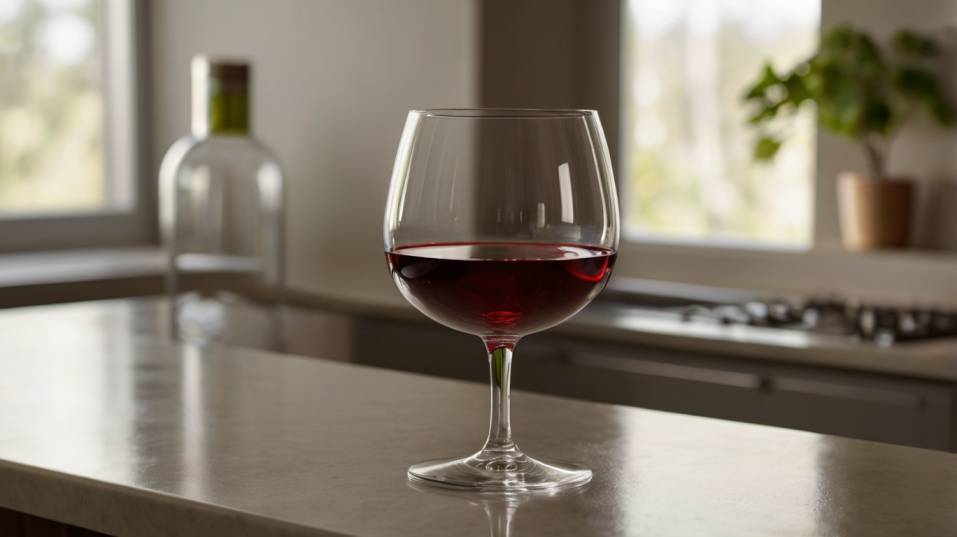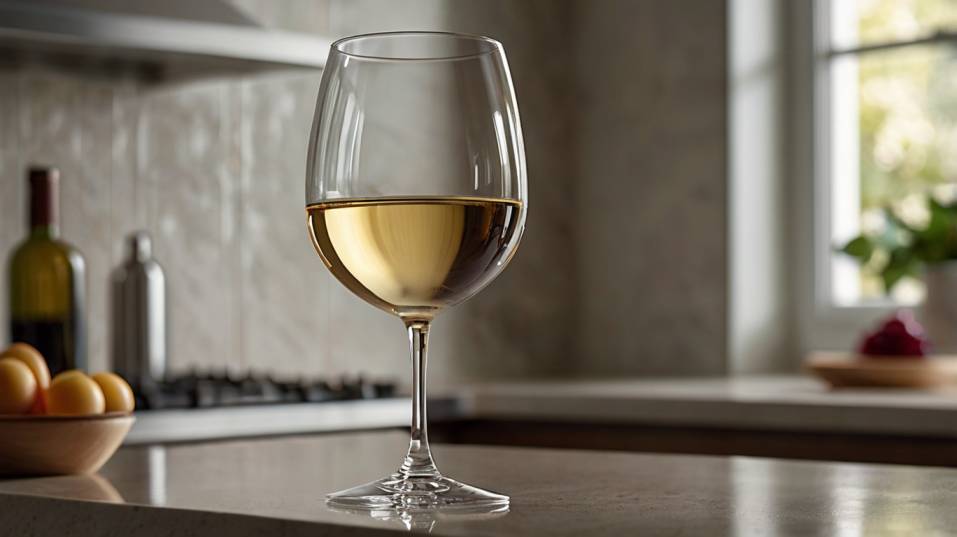How to Spot a Good Wine Glass (Without Spending Much)
Learn how to choose a wine glass that boosts aroma, taste, and confidence—without overspending or stocking up on dozens of styles.

What if the glass in your hand could make your wine taste better—without costing a fortune? For anyone early in their wine journey, this overlooked detail makes a big difference.
A well-shaped glass can bring out aromas, balance flavors, and elevate even an everyday bottle. No need for luxury brands or a shelf full of shapes. Just a little knowledge—and one smart pick—can change the way you taste, for good.
The Shape That Serves the Wine
Forget flashy designs, colored stems, or novelty shapes. The best wine glasses are clear, unadorned, and purposeful. Start with the bowl.
This is where everything begins. A proper wine glass should have a bowl that curves in slightly at the top.
This tulip-like shape serves two key purposes: it captures and concentrates aroma, and it directs the wine smoothly onto your palate.
Aroma matters more than most people think. Over 80% of what we consider taste is actually smell.
A wide bowl allows you to swirl the wine and release volatile compounds; the inward taper at the rim holds those aromas in place, funneling them directly to your nose.
Without that taper, aromas dissipate too quickly. With too narrow a bowl, there’s no room to release them in the first place.
The shape also subtly changes the way wine hits your tongue. A well-formed rim helps guide the liquid to specific areas of your mouth, which can shift the balance of acidity, sweetness, and fruit.
A flared rim, common in poor-quality glasses, disperses wine too widely, dulling your sensory perception.

Clarity, Weight, and Feel
A good glass should disappear as you use it. That means clear, colorless crystal or glass—no tint, no pattern, no frosting.
Wine is as much visual as it is aromatic and gustatory. You want to see the color, the clarity, the way the wine moves. A well-made glass lets you do this without distraction.
Weight tells you more than you might expect. A glass that feels light and balanced in the hand is usually well-constructed, often made from finer materials with thinner walls.
That thinness enhances the tactile experience—your lips and tongue register the wine directly, with less interference from thick rims or clunky glass.
Thick rims, in particular, are a giveaway of cheap manufacturing. They blunt the experience, both literally and figuratively.
You don’t need razor-thin crystal, but a finer rim helps the wine flow smoothly and evenly, making tasting feel intuitive and fluid.
Why the Stem Matters
Stemless glasses have become trendy, but there’s a reason serious tasters stick with traditional stemmed glasses. It’s not just about tradition—it’s about temperature and clarity.
Holding a glass by the stem keeps your hand from warming the wine too quickly. That’s especially important for white wines and lighter reds, which can lose freshness and nuance as they warm.
The stem also keeps your fingers off the bowl, which means fewer smudges and a clearer view of the wine.
And when you’re swirling, a stem provides control and finesse. You’re not just sloshing liquid—you’re aerating, encouraging the wine to open up. That’s harder to do gracefully without a stem.
Universal Glasses: One Good Tool
You don’t need a dozen different glasses for every varietal. In fact, one or two solid, versatile glasses can serve you better than a mismatched set of specialized options.
Look for a universal wine glass—a design meant to work with reds, whites, and even sparkling wines. These are typically medium- to large-bowled with a slight taper and enough room for a generous pour and a proper swirl.
Universal glasses strike a balance: large enough to let a young red breathe, but focused enough to enhance delicate white or rosé aromas.
They also simplify your routine. No stress about which glass to grab, no need to store six different shapes for every type of wine. With one reliable design, you build consistency into your tasting—one less variable between you and the wine.
What to Watch For When Shopping
Whether you're browsing shelves or scrolling online, focus on a few real-world signs of quality.
Tap the bowl gently with your fingernail—a high, clean ring usually means finer material. Check for seams: cheaper glasses often have visible mold lines, while better ones are molded or blown with a smooth, uninterrupted surface.
If you're in a shop, hold the glass by the stem and swirl some water inside. See how balanced it feels in your hand.
A good glass feels stable, responsive, and natural—not top-heavy or awkward. The bowl should narrow slightly at the rim and feel comfortable when you bring it to your lips.
Ignore gimmicks. Laser-etched bottoms, funky stem shapes, “aerating” chambers—these do little or nothing to enhance the wine itself.
In many cases, they’re distractions from poor overall design. Stick to clean, elegant shapes built around sensory performance, not showmanship.
Care and Longevity
Once you’ve found a glass you like, take care of it. Handwashing is safest for most thin-stemmed glasses, especially crystal.
Use warm water and a soft sponge—no harsh detergents. Dry with a lint-free cloth to avoid streaks. Store them upright, but not nested if they're delicate.
If you’re using your glasses regularly (and you should be), you’ll probably break one now and then. That’s okay. A good wine ritual should be lived in, not locked away behind glass doors. The goal isn’t perfection—it’s presence.
Final Thoughts
A well-chosen wine glass doesn’t just look good on a table—it changes the way you connect with wine.
It sharpens your senses, brings out hidden layers, and builds your confidence with every pour. You don’t need to spend a lot, but you do need to choose with intention.
So next time you reach for a bottle, take a moment to think about what you’re pouring it into. Grab a simple, elegant glass that respects the wine and your growing knowledge of it.
Then swirl, sniff, and sip like you mean it. Let the wine do what it was made to do—and let the right glass help it shine.
Tonight, try it: open a bottle you’ve been curious about, pour it into your best glass, and pay attention. Taste with focus. Smell with patience.
Drink with purpose. That’s how wine becomes more than just a drink—it becomes a craft, a habit, a lifestyle worth cultivating.




